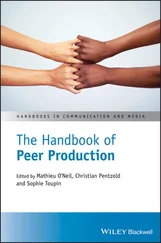39 Humphries, C., Liebenthal, E., & Binder, J. R. (2010). Tonotopic organization of human auditory cortex. NeuroImage, 50, 1202–1211.
40 Huth, A. G., De Heer, W. A., Griffiths, T. L., et al. (2016). Natural speech reveals the semantic maps that tile the human cerebral cortex. Nature, 532, 453–458.
41 Jerison, H. J. (1973). Evolution of the brain and intelligence. New York: Academic Press.
42 Johnsrude, I. S., Mackey, A., Hakyemez, H., et al. (2013). Swinging at a cocktail party: Voice familiarity aids speech perception in the presence of a competing voice. Psychological Science, 24, 1995–2004.
43 Joris, P. X., Smith, P. H., & Yin, T. C. T. (1998). Coincidence detection in the auditory system: 50 years after Jeffress. Neuron, 21, 1235–1238.
44 Jurafsky, D., & Martin, J. H. (2014). Speech and language processing. London: Pearson.
45 Kawato, M., Hayakawa, H., & Inui, T. (1993). A forward‐inverse optics model of reciprocal connections between visual cortical areas. Network: Computation in Neural Systems, 4, 415–422.
46 Kujawa, S. G., & Liberman, M. C. (2015). Synaptopathy in the noise‐exposed and aging cochlea: Primary neural degeneration in acquired sensorineural hearing loss. Hearing Research, 330, 191–199.
47 Lakoff, G., & Johnson, M. (1980). Metaphors we live by. Chicago: University of Chicago Press.
48 Leonard, M. K., Baud, M. O., Sjerps, M. J., & Chang, E. F. (2016). Perceptual restoration of masked speech in human cortex. Nature Communications, 7, 13619.
49 Liberman, A. M., Cooper, F. S., Shankweiler, D. P., & Studdert‐Kennedy, M. (1967). Perception of the speech code. Psychological Review, 74, 431–461.
50 Liberman, A. M., & Mattingly, I. G. (1985). The motor theory of speech perception revised. Cognition, 21, 1–36.
51 Meddis, R., & O’Mard, L. P. (2005). A computer model of the auditory‐nerve response to forward‐masking stimuli. Journal of the Acoustical Society of America, 117, 3787–3798.
52 Mesgarani, N., & Chang, E. F. (2012). Selective cortical representation of attended speaker in multitalker speech perception. Nature, 485, 233–236.
53 Mesgarani, N., Cheung, C., Johnson, K., & Chang, E. F. (2014). Phonetic feature encoding in human superior temporal gyrus. Science, 343, 1006–1010.
54 Mesgarani, N., David, S. V., Fritz, J. B., & Shamma, S. A. (2008). Phoneme representation and classification in primary auditory cortex. Journal of the Acoustical Society of America, 123, 899–909.
55 Mitchell, T. M., Shinkareva, S. V., Carlson, A., et al. (2008). Predicting human brain activity associated with the meanings of nouns. Science, 320, 1191–1195.
56 Müller‐Preuss, P., & Ploog, D. (1981). Inhibition of auditory cortical neurons during phonation. Brain Research, 215, 61–76.
57 Mumford, D. (1992). On the computational architecture of the neocortex. Biological Cybernetics, 66, 241–251.
58 Nelken, I., Bizley, J. K., Nodal, F. R., et al. (2008). Responses of auditory cortex to complex stimuli: Functional organization revealed using intrinsic optical signals. Journal of Neurophysiology, 99, 1928–1941.
59 Parker Jones, O., Seghier, M. L., Duncan, K. J. K., et al. (2013). Auditory–motor interactions for the production of native and nonnative speech. Journal of Neuroscience, 33, 2376–2387.
60 Pasley, B. N., David, S. V., Mesgarani, N., et al. (2012). Reconstructing speech from human auditory cortex. PLOS Biology, 10, e1001251.
61 Penfield, W., & Boldrey, E. (1937). Somatic motor and sensory representation in the cerebral cortex of man as studied by electrical stimulation. Brain, 60, 389–443.
62 Price, C. J. (2012). A review and synthesis of the first 20years of PET and fMRI studies of heard speech, spoken language and reading. NeuroImage, 62, 816–847.
63 Prothero, J. W., & Sundsten, J. W. (1984). Folding of the cerebral cortex in mammals. Brain, Behavior and Evolution, 24, 152–167.
64 Pulvermüller, F. (2005). Brain mechanisms linking language and action. Nature Reviews Neuroscience, 6, 576–582.
65 Rabinowitz, N. C., Willmore, B. D. B., King, A. J., & Schnupp, J. W. H. (2013). Constructing noise‐invariant representations of sound in the auditory pathway. PLOS biology, 11, e1001710.
66 Rao, R. P., & Ballard, D. H. (1999). Predictive coding in the visual cortex: A functional interpretation of some extra‐classical receptive‐field effects. Nature Neuroscience, 2, 79–87.
67 Rauschecker, J. P., & Scott, S. K. (2009). Maps and streams in the auditory cortex: Nonhuman primates illuminate human speech processing. Nature Neuroscience, 12, 718–724.
68 Saussure, F. (1989). Cours de linguistique générale. Wiesbaden: Otto Harrassowitz.
69 Schnupp, J. W., & Carr, C. E. (2009). On hearing with more than one ear: Lessons from evolution. Nature Neuroscience, 12, 692–697.
70 Schnupp, J. W. H., Garcia‐Lazaro, J. A., & Lesica, N. A. (2015). Periodotopy in the gerbil inferior colliculus: Local clustering rather than a gradient map. Frontiers in Neural Circuits, 9, 37.
71 Schreiner, C. E., & Langner, G. (1988). Periodicity coding in the inferior colliculus of the cat II: Topographical organization. Journal of Neurophysiology, 60, 1823–1840.
72 Scott, S. K., Blank, C. C., Rosen, S., & Wise, R. J. (2000). Identification of a pathway for intelligible speech in the left temporal lobe. Brain, 123, 2400–2406.
73 Stevens, K. N. (1960). Toward a model for speech recognition. Journal of the Acoustical Society of America, 32, 47–55.
74 Stevens, K. N. (2002). Toward a model for lexical access based on acoustic landmarks and distinctive features. Journal of the Acoustical Society of America, 111, 1872–1891.
75 Stuart, A., & Phillips, D. P. (1996). Word recognition in continuous and interrupted broadband noise by young normal‐hearing, older normal‐hearing, and presbyacusic listeners. Ear and Hearing, 17, 478–489.
76 Sumner, C. J., Lopez‐Poveda, E. A., O’Mard, L. P., & Meddis, R. (2002). A revised model of the inner‐hair cell and auditory‐nerve complex. Journal of the Acoustical Society of America, 111, 2178–2188.
77 Tremblay, P., & Dick, A. S. (2016). Broca and Wernicke are dead, or moving past the classic model of language neurobiology. Brain and Language, 162, 60–71.
78 Walker, K. M., Bizley, J. K., King, A. J., & Schnupp, J. W. (2011). Multiplexed and robust representations of sound features in auditory cortex. Journal of Neuroscience, 31, 14565–14576.
79 Wernicke, C. (1874). Der aphasische Symptomencomplex: eine psychologische Studie auf anatomischer Basis. Breslau: Max Cohn & Weigert.
80 Wicker, B., Keysers, C., Plailly, J., et al. (2003). Both of us disgusted in my insula: The common neural basis of seeing and feeling disgust. Neuron, 40, 655–664.
81 Willmore, B. D. B., Schoppe, O., King, A. J., et al. (2016). Incorporating midbrain adaptation to mean sound level improves models of auditory cortical processing. Journal of Neuroscience, 36, 280–289.
82 Wolpert, D. M., Ghahramani, Z., & Flanagan, J. R. (2001). Perspectives and problems in motor learning. Trends in Cognitive Sciences, 5, 487–494.
83 Zhang, X., & Carney, L. H. (2005). Analysis of models for the synapse between the inner hair cell and the auditory nerve. Journal of the Acoustical Society of America, 118, 1540–1553.
84 Zhang, X., Heinz, M. G., Bruce, I. C., & Carney, L. H. (2001). A phenomenological model for the responses of auditory‐nerve fibers: I. Nonlinear tuning with compression and suppression. Journal of the Acoustical Society of America, 109, 648–670.
85 Journal, M. S. A., Bruce, I. C., & Carney, L. H. (2014). Updated parameters and expanded simulation options for a model of the auditory periphery. Journal of the Acoustical Society of America, 135, 283–286.
Читать дальше
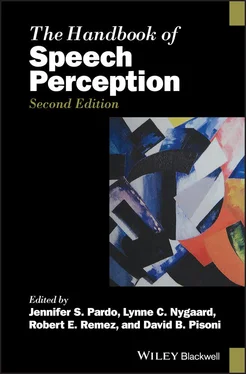

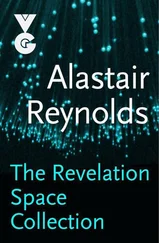
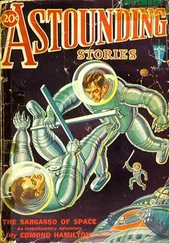
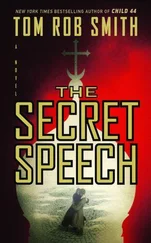



![О Генри - Справочник Гименея [The Handbook of Hymen]](/books/407356/o-genri-spravochnik-gimeneya-the-handbook-of-hymen-thumb.webp)



